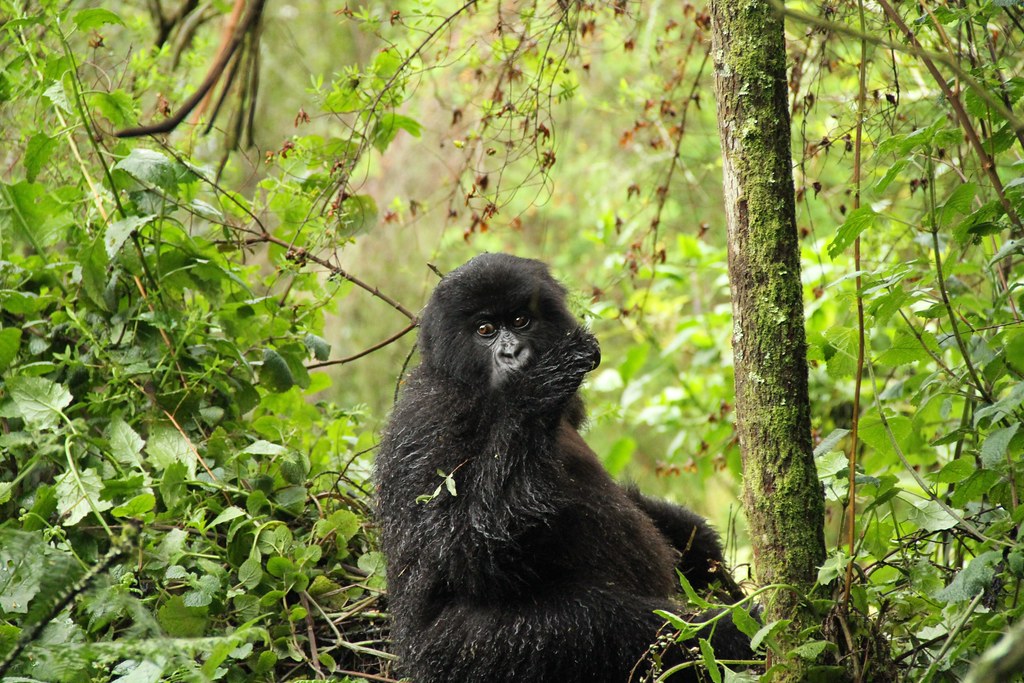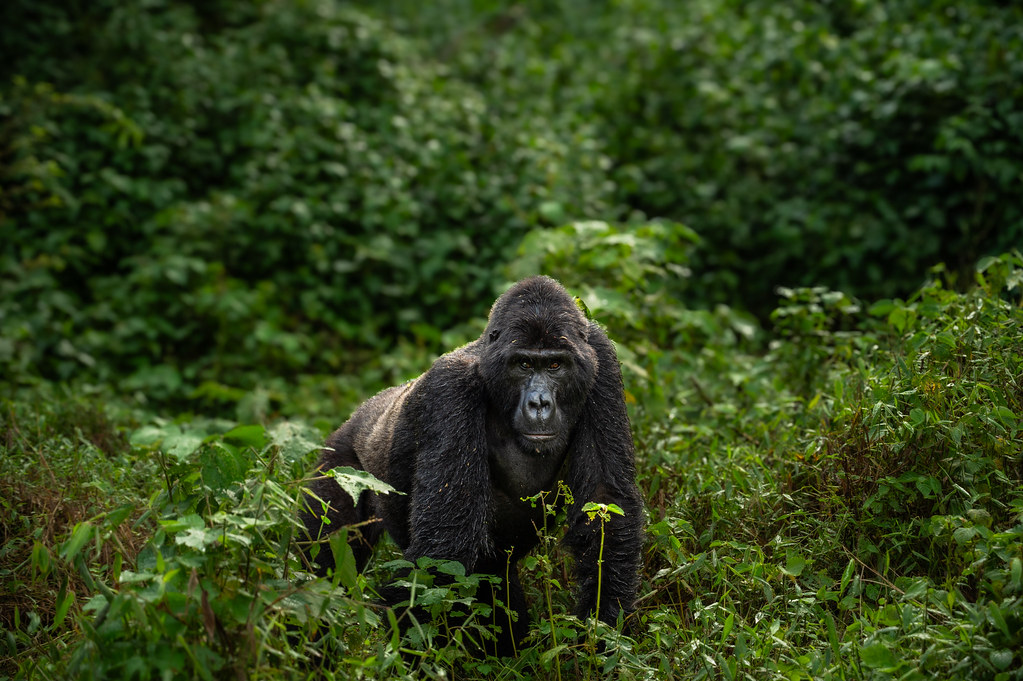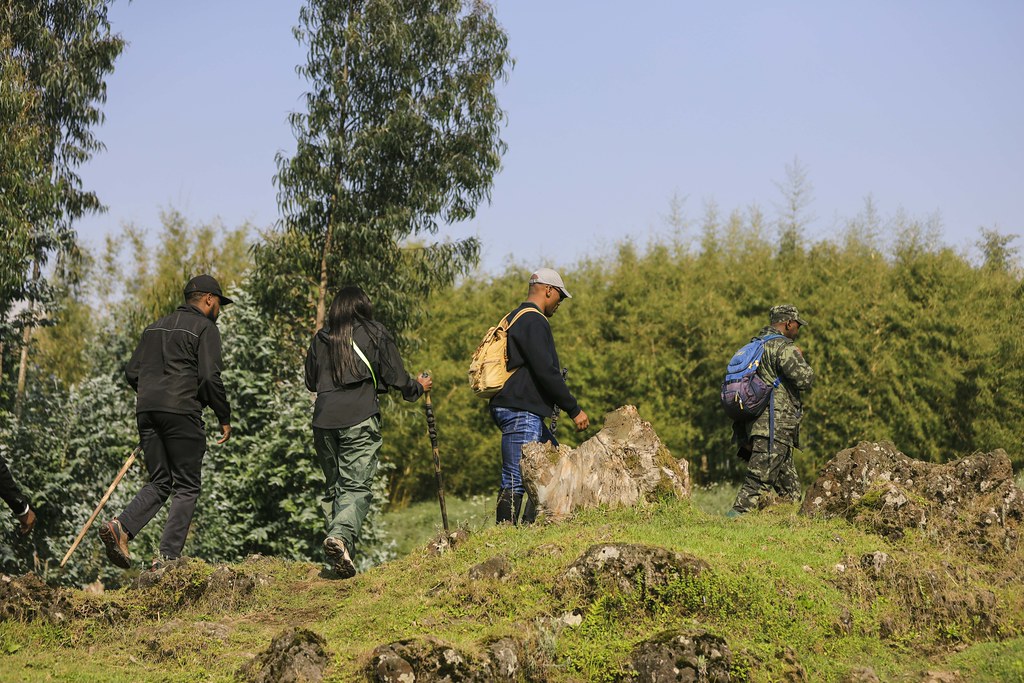Characteristics of Mountain Gorillas – Dimensions, Stature, Mass
Five characteristics of mountain gorillas — Why are mountain gorillas endangered — Characteristics of mountain gorillas wikipedia — Characteristics of mountain gorillas in the world — Mountain gorilla habitat How many mountain gorillas are left — What do mountain gorillas eat — Why are mountain gorillas important
Gorillas come in two fascinating species: eastern gorillas and western gorillas. Mountain gorillas are a fascinating subspecies of eastern gorillas that inhabit the lush landscapes of Uganda, the Democratic Republic of Congo, and Rwanda.
Bwindi Impenetrable Forest National Park is a vibrant sanctuary for half of the world’s mountain gorilla population.
Dimensions and Weight of Mountain Gorillas
Gorillas have a striking resemblance to humans, sharing 98% of their DNA, much like their close relatives, Bonobos and Chimpanzees.
They dwell in the lush, vibrant rainforests of the Virunga range, where every corner holds the promise of excitement and discovery.
Gorillas traverse their environment by knuckle-walking, yet they occasionally stand upright, especially when carrying food or in moments of defense.
Gorillas possess distinctive nose prints, much like how humans have their own unique thumbprints.
Every day, they build fresh nests, and the little ones snuggle up with their mothers until they reach around four years of age.
These nests are crafted from tree branches and leaves, embodying the spirit of the wild.
The dimensions of Mountain Gorillas
Gorillas stand as the largest living primates on our planet. Baby mountain gorillas enter the world in a delicate state, similar to human infants, weighing around 3-4 kilograms. They rely on their mother’s nourishing breast milk for sustenance until they reach the age of 4 years.
The size of mountain gorillas evolves as they mature.
Mountain gorillas are fascinating creatures that thrive on a diet consisting of leaves, fruits, bark, bamboo shoots, stems, and pith.
They occasionally enhance their diet with ants, termites, and insects.
Mountain gorillas cleverly utilize sticks to extract termites from holes, and a quarter of their diet is made up of fruits.
Weight of Mountain Gorillas
Gorillas possess impressive mass and are characterized by their strong, well-defined physiques.
Adult male gorillas are heavier than their female mountain counterparts.
The weight of an adult male gorilla typically falls between 136 kilograms and 196 kilograms, whereas females weigh between 68 kilograms and 113 kilograms.
The largest gorilla ever documented weighed 267 kilograms and stood 1.83 meters tall; this remarkable creature was shot in Ambam, Cameroon.
Western gorillas in captivity can weigh up to 310 kilograms, while mountain gorillas face significant challenges in zoos.
Elevation of Mountain Gorillas
The typical mountain gorilla stands at an impressive height of 1.7 meters.
Adult male gorillas stand between 5 feet 5 inches and 5 feet 9 inches tall, whereas females measure around 5 feet, making them shorter than their male counterparts.
Mountain gorillas traverse the terrain on all fours, yet they possess the remarkable ability to rise up on their hind legs as well.
They can traverse an impressive distance of 20 feet on just two legs.
The tallest gorilla ever recorded stood at an impressive height of 1.95 meters, boasting a broad chest measuring 1.98 meters and an arm span that reached 2.7 meters, with a weight of 219 kilograms.
This gorilla met its fate in Alimbogo, located north of the Kivu region, in the year 1938.
Gorilla Trekking and Immersion Experiences
For those eager to discover the fascinating details of mountain gorilla size, weight, and height, a visit to Virunga National Park in Congo, Bwindi and Mgahinga National Park in Uganda, and Volcanoes National Park in Rwanda awaits.
Gorilla permits should be secured ahead of time, usually around three months prior to the trekking date, particularly during busy seasons because of the increased interest.
Visitors who are unwell and younger than 15 years will not be permitted to encounter the majestic mountain gorillas.
Upon discovering a family of gorillas, you will have an hour to observe them, and it is crucial to adhere to the trekking rules and regulations while in their presence.
Gorilla habituation involves helping mountain gorillas become accustomed to the presence of humans.
This experience takes place exclusively in Bwindi Impenetrable National Park in Uganda, where you can immerse yourself in the fascinating process of joining researchers and gorillas during their habituation.
Gorilla habituation offers a thrilling experience, allowing you to immerse yourself with these magnificent creatures for four hours, in contrast to the standard gorilla trekking that lasts just one hour.



